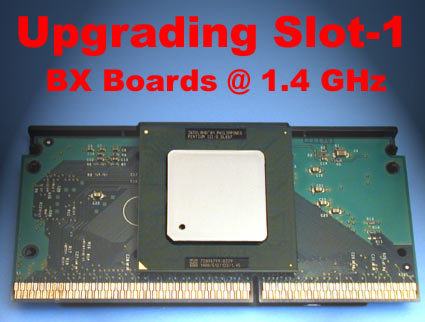The Resurrection: Pentium III 1.4 GHz on Slot-1 Motherboards
Not Dead Yet: Breathing New Life Into The BX Chipset

Owners of Pentium III systems based on the Intel 440BX chipset are in a pretty good position: with very little effort, many of these systems can be equipped with modern processors running at up to 1.4 GHz, despite all socket, core voltage, and BIOS support pitfalls.
Back in September, we already demonstrated how current Tualatin Pentium III processors work on older motherboards . The problem is that Intel changed the processor's pin-out, forcing buyers to upgrade their motherboard, as well.
Intel repeated this strategy with its Pentium 4 processor, enraging many early buyers. The first generation of socket 423 boards was declared outdated after only one year, and a new socket, using 478 pins, was introduced. Socket 478 still forms the basis for all Pentium 4 systems, which also means the early adopters were once again forced to buy not only a new processor but also a new motherboard.
Despite, or maybe even because of these adversities, every once in a while a company produces an adapter with which a new processor can run on an old board. Intel offered this kind of upgrade path back in the days of the "Overdrive," which was basically a processor-cum-adapter.
Today, however, we're not talking about turning a 486 into a Pentium or a Pentium into an AMD K6, but about running a fast Pentium III processor in first generation boards. One name that is intricately tied in with the Pentium III is "BX," or, rather, Intel's i82440BX chipset, which helped bring the P-III into the mainstream market. The chipset was so popular and reliable that many systems built on it are still in use today.
Get Tom's Hardware's best news and in-depth reviews, straight to your inbox.
Current page: Not Dead Yet: Breathing New Life Into The BX Chipset
Next Page The Genesis Of The P-III